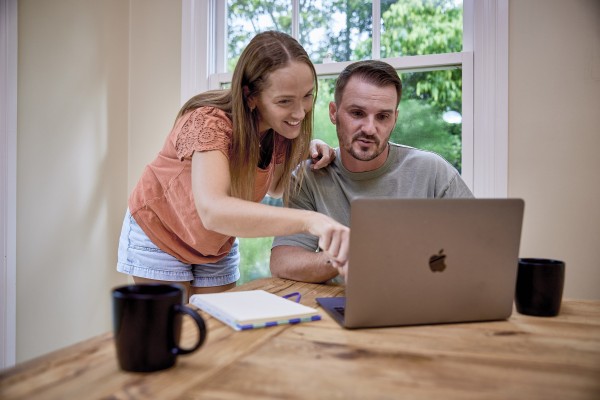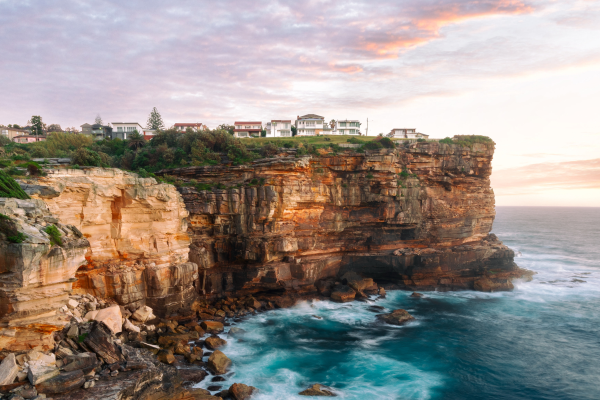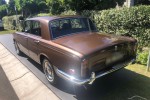Best weather in Australia - full rundown by state and city

Uncovering which Aussie states and cities have the best climate
Is Queensland really the Sunshine State? Does Melbourne really have four seasons in one day? Is the Northern Territory truly as hot and dry as they say it is?
In this article we’re weighing up the weather across the major cities, states and territories in Australia so you can decide which spot has the climate that suits you best.
Let’s dive in.
Weather in Australia - states and territories
Typically people think of Australia as a place where the sun always shines and the surf is always up. But, the sheer size of the country means the weather can vary greatly across the different states and territories. Here’s a run down of what to expect in each part of the country.
New South Wales (NSW)
NSW has four clear seasons when it comes to climate. However, the size of the state does mean that conditions can be quite different from one place to another.
Overall NSW has a moderate climate (by Australian standards) but experiences higher temperatures in the north-west regions and much cooler temperatures towards the Southern Alpine regions.
The State’s average yearly temperature is 21ºC (0.66% higher than Australia’s averages) and there are an average of 47 rainy days a year (13% of the time).
NSW weather stats
Queensland (QLD)
Queensland has a subtropical climate and experiences a wet and dry season each year. The average temperature is 26ºC (6% higher than Australia’s averages) and the state experiences an average of 41 rainy days a year (roughly 11%).
Queensland weather stats
South Australia (SA)

South Australia has a Mediterranean climate with hot, dry summers and much cooler winters. Like in other states, the weather is typically hotter in the northern areas such as Flinders Range, and colder in the southern regions such as Kangaroo Island.
The average temperature is 21ºC and the state experiences an average of 21 rainy days a year (roughly 11%).
South Australia weather stats
Victoria (VIC)
Victoria has a varied climate: dry in the far north-west and more temperate in coastal towns. The average temperature is 15ºC (roughly 5% lower than Australia’s averages) and there are an average of 92 rainy days each year (25% of the time).
The wettest parts of the state are the Otway Ranges and parts of Gippsland while the driest area is the north-west.
Victoria weather stats
Western Australia (WA)
Western Australia’s average temperature is 23ºC (roughly 2.6% higher than Australia’s averages) and there are an average of 33 rainy days each year.

WA weather stats
Australian Capital Territory (ACT)
The average temperature in ACT is 14ºC (6% lower than Australia’s averages) and there are an average of 75 rainy days a year (roughly 20% of the time).
ACT weather stats
Northern Territory (NT)
The Northern Territory receives a lot of rain throughout the rainy season ((December-March). The average yearly temperature is 27ºC (7% higher than Australia’s averages) and there are an average of 41 rainy days each year (roughly 11% of the time).

NT weather stats
Tasmania (TAS)
Tasmania is one of the coolest parts of Australia. The average yearly temperature is just 13.5ºC and there are an average of 84 rainy days each year (22% of the time).
TAS weather stats
Weather in Australia - every major city
Now that we have an overview of which states are rainiest and which have the most heat and sunshine, we can dive into the major cities.
Sydney
Sydney offers a moderate climate most of the year with warm summers and mild winters. With an average of 105 sunny days a year it’s the perfect spot to enjoy the outdoors. Here’s an overview of each season in the city.

Summer runs between December and February each year with average maximum temperatures ranging between 25°C and 27°C and an average humidity level of 65%.
In autumn (March-May) the humidity in Sydney drops off and average temperatures sit between 14°C and 22°C.
The winter months are June - August and this is when Sydney’s temperatures drop to between 8°C and 17°C.
Spring days see the weather warm up from winter without the high levels of humidity that summer brings. The average daily temperature ranges between 11°C and 23°C.
Brisbane
Brisbane has pleasant weather throughout most of the year. While it is technically still a part of the tropical cyclone risk area, actual occurrences in the city are quite rare. The average temperature is 23ºC and there are an average of 40 rainy days each year. Here’s an overview of how the weather looks throughout each season.
Average summer temperatures range between 21°C and 29°C. Since this is the wet season, you can expect a reasonable amount of rain, usually in the form of afternoon thunderstorms.
Autumn sees the humidity drop and average temperatures sit between 15°C and 25°C.
Winter in Brisbane is typically fairly mild and still includes a lot of sunshine. While the temperatures can be a little more crisp than in summer or autumn (between 11°C and 21°C) it’s still warm in comparison to other parts of the country.
Spring in Brisbane is a similar climate to autumn with temperatures averaging between 15°C and 25°C.
Adelaide
Adelaide is considered the driest of all the Australian capital cities however, winters are typically quite wet while summers are dry and hot. The average temperature in the city is 18ºC and there are an average of 26 rainy days each year. Here’s an overview of how the weather looks throughout each season.
Temperatures in summer range between 16°C and 29°C but this has been known to rise up to 40°C. The heat is dry - Adelaide has the lowest levels of humidity of any Australian city.
In autumn the tree life in Adelaide turn to shades of red, orange and gold. This season temperatures average between 12°C and 23°C.Unlike other parts of Australia, it’s common to experience frost in Adelaide throughout winter. Temperatures drop to as low as 8°C and June sees a high level of rain.
While warmer than winter, spring still has lows of 12°C in the evening and night times. However rain drops off making the outdoors more and more appealing.
Perth
Perth has been named as the sunniest capital city in Australia with clear skies 70% of the year. The average yearly temperature is 21ºC and there are an average 24 rainy days annually. Let’s take a look at what the weather is like across each season.

Unlike other, more tropical major cities in Australia, Perth enjoys hot, dry summers without much rain. Temperatures range between 17°C and 30°C.
Winter on the other hand can can bring downpours and thunderstorms and has average temperatures ranging between 8°C and 19°C.
Autumn is largely warm and sunny with slightly cooler average temperatures ranging between 13°C and 26°C.
Spring is a similar situation with warm temperatures (12°C- 23°C) and clear skies for the most part (12°C- 23°C).
Melbourne
Melbourne has long been known as the city with four seasons in one day. It’s true that Melbourne weather can be somewhat temperamental with heat waves, torrential rain and everything in between. Here’s what the different seasons look like.
The mean temperatures in Melbourne in summer sit between 14°C and 25°C. There are also highs of 30°C and over - these heat waves can last for a number of days.
Autumn is one of the seasons in Melbourne that can be hard to predict. Average temperatures range between 11°C and 20°C but all types of weather are possible. Expect morning fogs, sunny days and windy or rainy afternoons (not necessarily in that order).
Winter is a time where temperatures can drop low enough that snow can even fall. The average temperatures range between 6 °C and 14°C and heavy rain is common at this time of year.
Spring is another uncertain time for weather in Melbourne. Temperatures range between 9°C and 20°C. Even if the day starts bright and sunny, you could be experiencing torrential rain within a couple of hours.
So, where is the best weather in Australia?
If it’s heat and sunshine you’re looking for, Western Australia and Perth specifically tops the list for the best weather in Australia
But, there’s something to be said for experiencing different seasons. Each city and state offers something unique in their climate - the final decision as to which place is best, is really up to you.
Looking to make the move to a city with better weather? Use Upmove to find and compare top-rated removalists across Australia.

What do our customers say?

















![Top 5 Cheapest Suburbs in Sydney [Updated 2025] Top 5 Cheapest Suburbs in Sydney [Updated 2025]](https://cdn.upmove.com.au/image/blog/3b114ecb3ce4b4405670d1926b57f6e3.jpeg)









